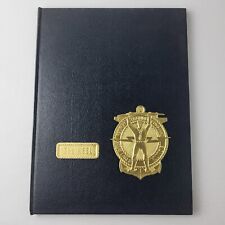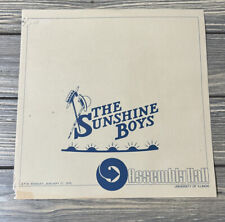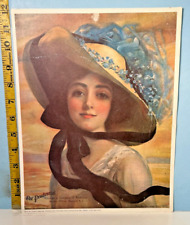|

On eBay Now...
1975 The Amanas Yesterday - Iowa Religious Communal Society - Vintage Photo Book For Sale

When you click on links to various merchants on this site and make a purchase, this can result in this site earning a commission. Affiliate programs and affiliations include, but are not limited to, the eBay Partner Network.

1975 The Amanas Yesterday - Iowa Religious Communal Society - Vintage Photo Book:
$12.20
Yes we combine shipping for most multiple item purchases.Add multiple items to your cart and the combined shipping total will automatically be calculated.
Yes we combine shipping for multiple purchases.Add multiple items to your cart and the combined shipping total will automatically be calculated.
1975 The Amanas Yesterday - Iowa Religious Communal Society - Vintage Photo Book
The Amanas YesterdayIt was in 1714 in southwestern Germany that two menHod « reliaious movement that later became known asinspiration and which icd.y »Amana community.The ancestors of the present Amana people came to theUnited States beginning in 1842, budding six Villages inthe vicinity of Buffalo, N.Y, - Middle Ebenezer, UpperEbenezer. Lower Ebenezer and New Ebenezer in New YorkState and two villages in CanadaBecause the Buffalo area was being rapidly urbanized, thegroup sought land to the west, and in 1854 purchased thesite of the present Amana Colonies.After arrival In this country, the group adopted areligious-communal way of life, with all property held incommon and with all church and secular decisions beingmade by the same leadershipThe communal way of life lasted nearly a century, until thepeople voted a separation of \"church and state\" in 1932 —effectively adopting the free enterprise way of life thatsurrounded themPurposeThe Constitution and By-laws of the Community of TrueInspiration, incorporated in 1859 under the name of theAmana Society, stated in part\"The purpose of our association as a religious Society isno worldly or selfish one, but the purpose of the love ofGod in His vocation of grace received by us, to serve Himin the bond of union, inwardly and outwardly according toHis laws and His requirements in our own consciences,and thus to work out the salvation of our souls, throughthe redeeming grace of Jesus Christ, in self-demal, in theobedience to our faith, and in the demonstration of ourfaithfulness in the inward and outward service of theCommunity, by the power of grace, which God presents uswith.And to fulfill this duty we do hereby covenant andpromise collectively and each to the other by theacceptance and signing of this present constitution.In this bond of union tied by God amongst ourselves, it isour unanimous will and resolution, that the landpurchased here and that may hereafter be purchased, shallbe and remain a common estate and property, with all theimprovements thereupon and all appurtenances thereto, asalso with all the labor, cares, troubles and burdens, ofwhich each member shall bear his allotted share with awilling heartAgriculture and the raising of cattle and other domesticanimals, in connection with some manufactures andSutton/ 3 under the blessing of God form the means ofand thorah °^tbis Society. Out of the income of the landof the T ranches of industry the common expensesof the Society shall be defrayed.the improvement onhna\" ’r°m ‘\'me t0 ‘\'me be applied ‘°the buildino and the cornrnon estate of the Society, toschooi-htuses Ddntlntainin9 °f meetin9- anpcare of the old\' sick and®®!abllshments\' the support andthe founding of a busing members of the Society, tobenevolent9pu%aosbelTnegS:;S .Sate‘y-\'-d, ‘°LeadershipChristian Metz was the “Werkzeuge” or inspired leaderwho caused the people to leave Germany and settle inAmerica. There has been no \"Werkzeuge\" since the deathin 1883 of Barbara Heinemann Landmann at the age of 88.The control and management of all the affairs of theAmana Society was vested in a board of trusteesconsisting of 13 members, elected annually out of thenumber of elders.This election was held annually on the first Tuesday inDecember. Each male member who had signed theConstitution, and also the widows and such femalemembers over 30 years of age, who were not representedby a male member, were entitled to vote.Elders had been chosen by the \"Werkzeuge\", but since1883 they have been nominated by the local \"Bruderrath\"or Council of Elders, and confirmed or rejected by the\"Grosse Bruderrath\" or Board of Trustees, also known asthe Supreme Council.Elders conducted the church services, and met eachSunday morning. The local Council of Elders met weekly,and the Supreme Council met once a month.The local council ruled on local problems only. Theelected Supreme Council or Board of Trustees ruled onboth spiritual and temporal matters. Thus it set the datesfor communion services, fast days, penitence services, etc.It also set the yearly allowance, paid not in cash but incredit at the various stores. This allowance varied from $35to $75 per person, depending on the Society\'s currentfinancial structure. The allowance was equal regardless ofyour work, status or capacity.The \"Grosse Bruderrath\" approved or vetoed purchasingrequests from shops, departments and plants. It alsoauthored occasional letters of exhortation,encouragement, admonition, warning, etc., that were readat regular church services. — Henry Schiff.CongregationsChildren and their young parents worshipped together,and there were separate services for older people and the\"in-betweens\" — people in their 30\'s and 40\'s. At\"Allgemeine” or combined services, children occupied thefront row benches. Evening prayer meeting attendance bychildren was at the discretion of the parents.After you were in the middle church, if you had morechildren you went back to the children\'s group. You had tostay back until the child was two years old. That was notnecessarily a deterrent to having more children, but onceyou were in the second church, you liked to stay there. Theservices, however, were the same.Sunday School was initiated in 1933. It was prompted bythe adoption of an All English-No Religion curriculum atthe Amana School System. Before 1933, a regular courseof religion was part of the Amana school curriculum.Amana Church SocietyIn six villages, the church was erected and in use in theyear of the initial settlement. These dates were: Amana,1855; West Amana and South Amana, 1856; High Amana,1857; East Amana, 1860; Homestead, 1861. Middle Amanawas settled in 1861, the church was first used in 1862.Thus did the first settlers in the Colonies, urgently needingeverything including even shelter from the elements,bespeak the importance of religion in their daily lives.Regular services were 11 times each week — morningservices Wednesdays, Saturdays and Sundays, afternoonservices on Sundays, and evening prayer meetings eachday. There were daily services during Holy Week, and otherspecial services for Ascension Day, Pentecost, and the dayafter Christmas, New Year\'s Day and Easter.Unpretentious, the churches were indistinguishable inappearance from the homes and other buildings. Inside,the white-washed walls, bare floors and unpaintedbenches were a testimony of the simplicity of the Christianfaith.Women, wearing black shawls and bonnets, sat on oneside of the church, men on the other. There were nomusical instruments. Hymns were sung, and the messagesof the elders were from the Bible and from the testimoniesof the founders and leaders of the church. They urged apeaceful, brotherly way of living in simple dignity andhumility, faith in Christ and belief in the word of God.CommunionCommunion was biennial — every other year — and therewere five separate Communion Services on successiveSundays: “das erste Liebesmahl\" for the senior group;\"das zweite Liebesmahl\" for the second-ranking group;“das dritte Liebesmahl\" for the third-ranking groups; \"dasvierte Liebesmahl\" for the fourth-ranking or junior group,and “das Kinder-Liebesmahl\" for the children.A special communion bread, a long French bread type ofloaf, was baked by the village baker the day before theservice. The wine had been aged in huge casks four to fiveyears.Part of the service was a foot-washing ceremony incommemoration of Christ washing the feet of His disciples.The Children’s Communion was held at a communalkitchen. Instead of bread and wine, they were servedcoffee cake and hot chocolate, to impart the meaning andsignificance of communions in the children\'s future, andto give them a sense of belonging. An Elder expounded onthe meaning of communion, and hymns were sung. —Henry Schiff.
And much more!13847


1975 The Keel Great Lakes Naval Recruit Training Command Yearbook Company 75-925 $42.96

1975 THE NATIONAL SWING NEWSPAPER - SWINGING WITH MA BELL - NP 7314 $35.00

Vintage January 1975 The Sunshine Brothers Assembly Hall Program Souvenir $77.99

1975 The Prudential American Insurance Company Hickory Inc. Poster Reprint 10x12 $18.90

1975 The St. Charles Street Car or The Bew Orleans & Carrollton Rail Road - NEW $6.95

1975 The Street Cars of BOSTON, Vol. 3, Closed and Semi-Convertible Cars - NEW $9.95

1975 THE SPECTRUM GETTYSBURG COLLEGE YEARBOOK - GETTYSBURG, PA - YB 3302 $75.00

Vintage December 1975 The Air National Guard and The Air Force Reserve $17.99
|